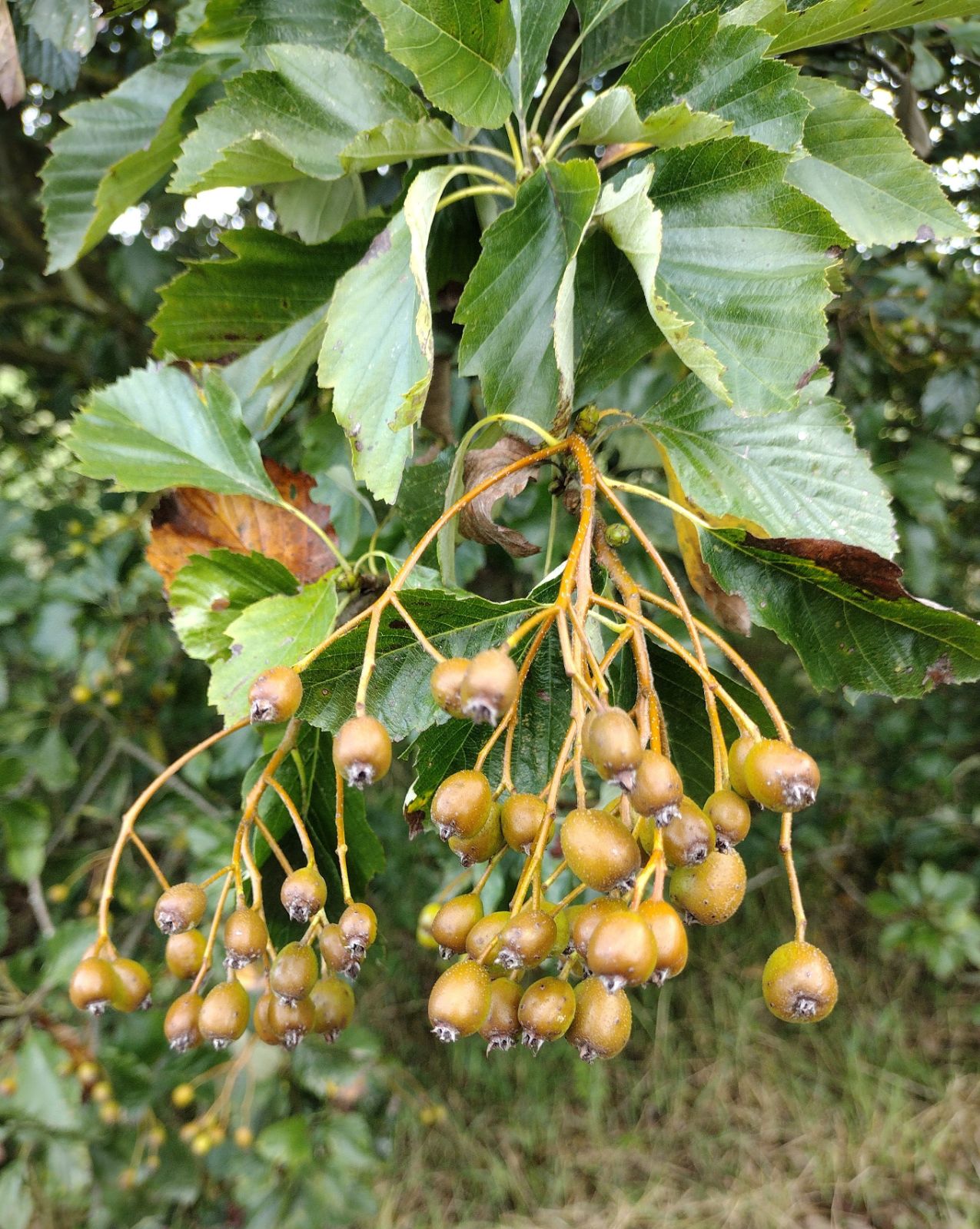Karpatiosorbus hybrida
Credits
New article for Trees and Shrubs Online.
Recommended citation
'Karpatiosorbus hybrida' from the website Trees and Shrubs Online (treesandshrubsonline.
Genus
Synonyms
- Aria decipiens (Bechst.) M.Roem.
- Aria rotundifolia M.Roem.
- Azarolus hybrida Borkh.
- Crataegus hybrida Bechst.
- Crataegus rotundifolia Bluff & Fingerh.
- Hahnia aria var. rotundifolia (M.Roem.) Dippel
- Pyrus acutiloba Ilse
- Pyrus decipiens Bechst.
- Sorbus decipiens (Bechst.) G.Kirchn.
- Pyrus latifolia f. parumlobata Irmisch
- Pyrus rotundifolia Bechst.
- Sorbus acutiloba (Ilse) Hedl.
- Sorbus acutiloba (Irmisch) G.Kirchn.
- Sorbus acutisecta Reuther & O.Schwarz
- Sorbus × ariatorminalis Gremli
- Sorbus confusa Gremli
- Sorbus hardeggensis Kovanda
- Sorbus heilingensis Düll
- Sorbus isenacensis Reuther
- Sorbus latifolia f. acutiloba Irmisch
- Sorbus latifolia var. parumlobata (Irmisch) C.K.Schneid.
- Sorbus multicrenata Bornm. ex Dull
- Sorbus parumlobata (Irmisch) G.Kirchn.
- Sorbus rotundifolia (M.Roem.) Hedl.
- Sorbus sarcocarpa Gand.
- Sorbus subcordata Bornm. ex Dull
- Sorbus × tomentella Gand.
- Sorbus × vagensis Wilmott
Editorial Note
The text below is that of Bean (Bean 1981) who discussed this taxon under the name Sorbus × vagensis below his article on S. latifolia (now Karpatiosorbus latifolia). We have created this hybrid article – Bean’s text under the correct modern name, with appropriate synonymy – whilst we await sponsorship to enable a full revision of this genus to be written. We are re-organising the Sorbus sensu lato articles in this way to enable a new revision of Sorbus sensu stricto to commence in 2023, and to bring the nomenclature of this complex group of plants up to date in line with modern treatments.
TC, September 2023.
A natural hybrid between S. aria and S. torminalis, occurring occasionally with the parents, and at one time much confused with the various microspecies of the S. latifolia aggregate. Indeed it is impossible to determine to which category an intermediate between S. aria and S. torminalis belongs unless it has been studied in the field, or unless its breeding behaviour is known. These casual hybrids are often of low fertility, but in compensation for that they sucker freely when coppiced, so that a single plant may eventually give rise to a thicket of considerable extent.
The correct name for S. aria × S. torminalis is uncertain, for all the older names that have to be considered are either of uncertain application or illegitimate. S. × vagensis, although recent (1934), is probably the correct name and certainly the best founded, since the type-tree, at Symonds Yat in the Wye Valley, is well known and has been studied. Wilmott, who described it, took it to be a species, believing that the identical younger plants near it were seedlings. These, however, proved to be suckers, and plants raised by Edmund Warburg from seeds of the original tree were not uniform.
S. × vagensis is confined in Britain to the Wye Valley, no doubt because S. aria and S. torminalis so rarely occur together in this country. But this hybrid (called S. × confusa by French and some other botanists) is reported to be fairly common on the calcareous plateaux of Burgundy and Lorraine, and near Lake Annecy.
S. × vagensis is variable in the shape of its leaves, and of no greater ornamental value than S. devoniensis or S. subcuneata. Of more interest as an ornamental is the sorbus distributed by Messrs Hillier in the 1930s as Sorbus × magnifica Hesse, from an apparent confusion between this plant and the S. aria magnifica of Hesse. Its fruits are not unlike those of S. torminalis, which it also resembles in giving good red or yellow autumn colour, but the leaves are scarcely lobed and are loosely woolly beneath. What appears to have been a very similar plant grew in the Münden Botanic Garden in Germany; it was bred from and found to be a hybrid. A plant in the Winkworth Arboretum, Godalming, is probably this “S. × magnifica” but it seems to be rare in gardens. The original tree, which may have come from Messrs Hesse under some other name, grows in the Sarum Road nursery of Messrs Hillier.

